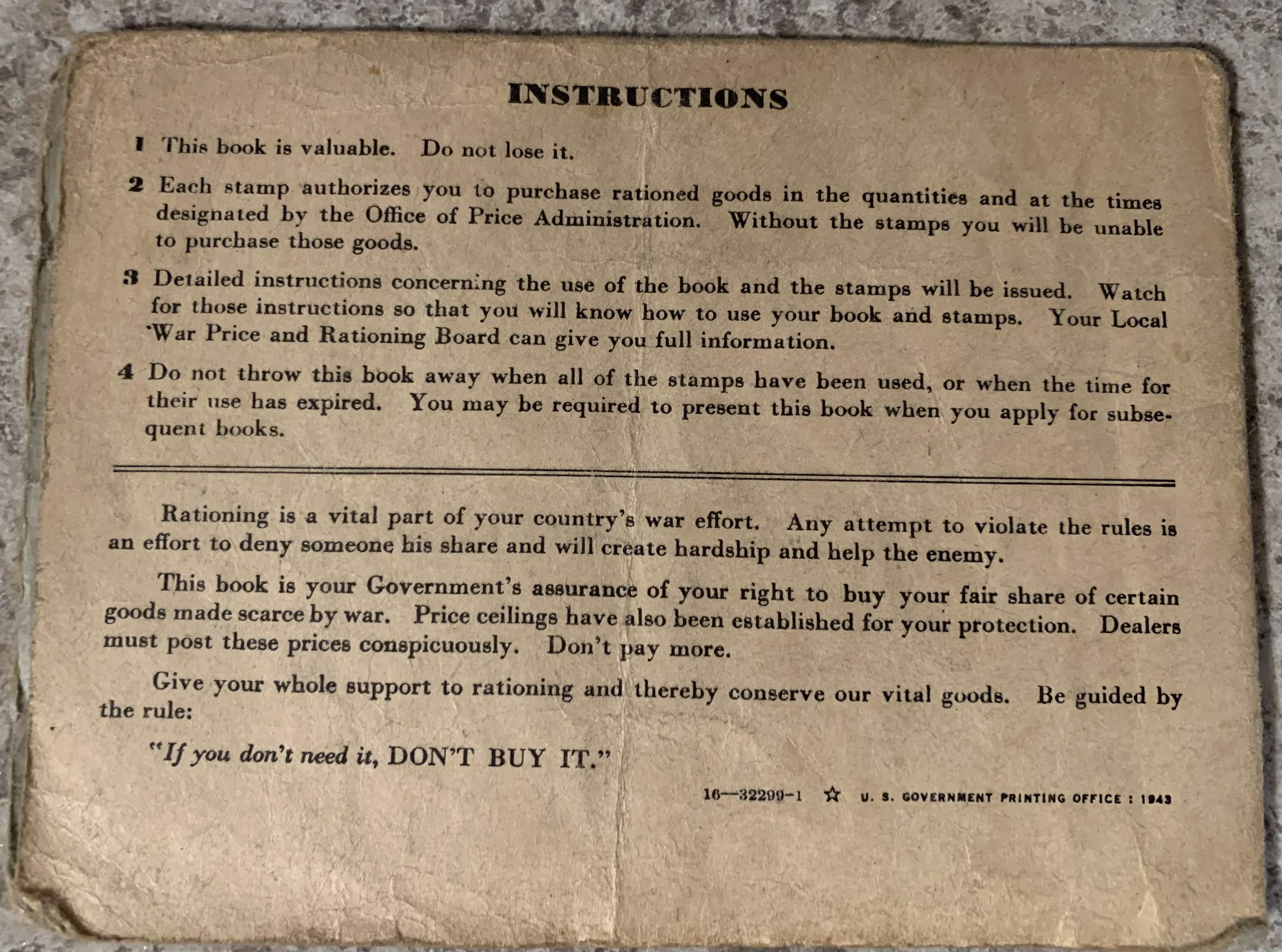War Ration Books and Plain Language
Clarity born out of necessity

At the onset of World War II, the US government established a system of rationing foods and supplies. As part of that system, individuals received “War Ration Books” with stamps that could be exchanged for rationed goods.
The other day, a family member discovered a handful of these books in another family member’s home and I was struck by the instructions on the back of one.
On the top, the book has straightforward, directive prose:
- This book is valuable. Do not lose it.
- Each stamp authorizes you to purchase rationed goods in the quantities and at the times designated by the Office of Price Administration. Without the stamps you will be unable to purchase those goods.
- Detailed instructions concerning the use of the book and the stamps will be issued. Watch for those instructions so that you will know how to use your book and stamps. Your Local War Price and Rationing Board can give you full information.
- Do not throw this book away when all of the stamps have been used, or when the time for their use has expired. You may be required to present this book when you apply for subsequent books.
On the bottom, the book borders on propaganda:
Rationing is a vital part of your country’s war effort. Any attempt to violate the rules is an effort to deny someone his share and will create hardship and help the enemy.
This book is your Government’s assurance of your right to buy your fair share of certain goods made scarce by war. Price ceilings have also been established for your protection. Dealers must post these prices conspicuously. Don’t pay more.
Give your whole support to rationing and thereby conserve our vital goods.
Be guided by the rule: “If you don’t need it, DON’T BUY IT.”
I’m fascinated by these instructions because they seem to be an excellent example of the use of plain language in government.
The instructions write for the audience. These books were intended for distribution to the general public (though women were the primary users) and used simple, straightforward words and short, concise sentences (e.g., it has a Flesch-Kincaid Grade Level of 5.7). It pulls the reader in quickly (“This book is valuable.”). There’s no jargon here (though I could quibble about whether the Office of Price Administration needed to be named specifically). There are no frills.
The instructions are organized well, using a numbered list at the top, and prose near the bottom. It uses strong typography, mixing use of italics and capitalization to highlight the main points.
And the instructions tell a story. War Ration Books, which were fundamentally about limiting people’s ability to access basic commodities, were framed around language of civic duty, fairness, and service. The instructions directly connected the use of the stamps to the war effort.
In short, these instructions are an interesting historic example of the government taking plain language seriously and how good content design can make a significant impact.